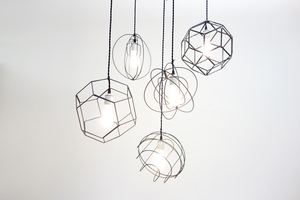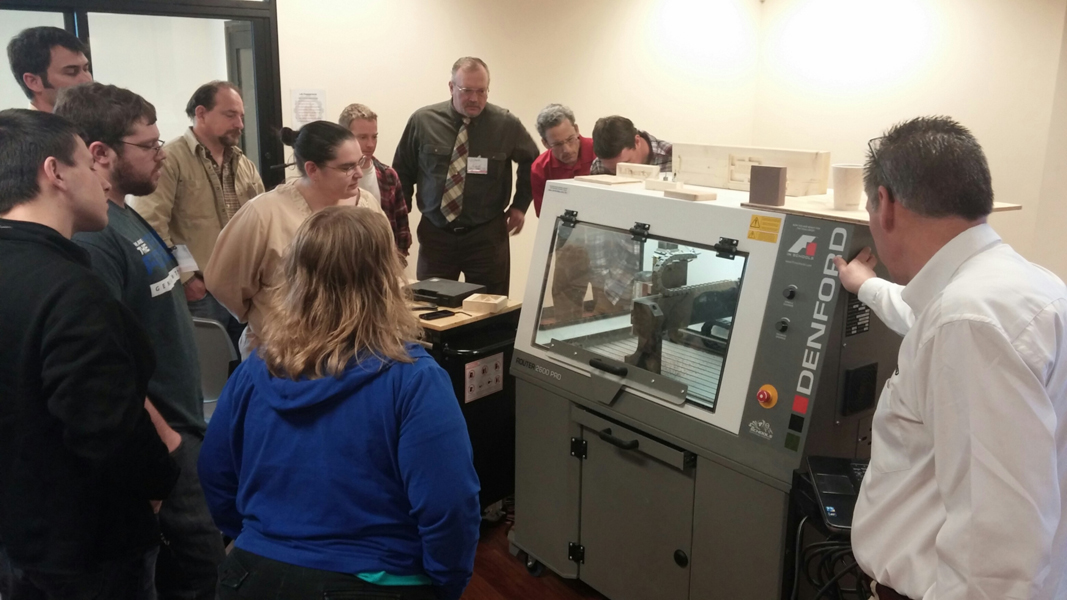Continuing on with the theme of fabrication technologies, we want to address one of the most common technologies found in makerspaces: CNC machines. There are a wide variety of CNC machines for makerspaces on the market and deciphering which is best for your users can be challenging. These are a few key points to consider.
Select Machine Type Based on Your Planned Materials and Usage
You may not necessarily need a mill for your makerspace. Oftentimes a router will give your users all the capabilities they need. While mills can cut hard metals, like iron or steel, routers can cut parts out of plastics or wood. Some routers can also cut light metals, such as brass, copper, and aluminum.
One of the great things about routers is that they operate at faster speeds than mills due to high spindle speeds used on lighter materials. This makes it possible for several makerspace users to get time on the equipment in a given day and produce their projects more quickly. Routers are also usually less expensive than mills.
[one_half valign=”top” animation=”none”]
If your users are solely interested in bending metals, you may want to consider a desktop CNC wire bender that can bend and cut wires, tubes, and rods, which can then be soldered together to create 3D structures.
Another option to consider is lathes. Lathes are used to cut or carve material from a piece rotating on a cylinder. These applications are a bit more niche but can be common in makerspaces, which is why it’s important to have a full understanding of your users’ CNC machining capability expectations before you invest in your equipment.
[/one_half]
[one_half_last valign=”top” animation=”none”]

[/one_half_last]
Select a Table Size Appropriate for Your Size Parts
It’s no secret that CNC machines can take up a large footprint in your makerspace. Having a solid understanding of your user base can inform you on which table size and model is right for you. In some cases, it makes more sense to have multiple smaller machines to increase capacity vs one large machine.
If you’re simply looking to give users practice on a low specification CNC machine, the MicroCNC machines from Matrix are great low accuracy, low cost solutions.
For precise CNC routing in a compact system at an affordable price, you may want to consider the Axiom Precision i2R CNC routers. These are great because they come in three sizes and with an array of available accessories, you can essentially build your CNC exactly the way you want it.
Prioritize Student Safety
While some of your users may have a bit of experience with CNC, it’s still important to make user safety a priority. Most educational CNC models are equipped with safety features ideal for makerspace environments.
[one_half valign=”top” animation=”none”]

[/one_half]
[one_half_last valign=”top” animation=”none”]
For example, you’ll want a system that will turn off the machine if material is cut through too quickly. One of the great safety features in all Denford CNC machines is the fact that they are fully enclosed so that sharp materials are never sent airborne.
These powerful, industrial-level machines also feature guarded enclosures that won’t allow the machine to run if the door is open.
[/one_half_last]
Read more about CNC machines for for makerspaces and other makered technologies, including 3D printers, vacuum formers, robotics and more by downloading our full Makerspace Checklist.
Looking for something more industrial? We cover key considerations for equipping an industrial machine shop with CNC machines here.



